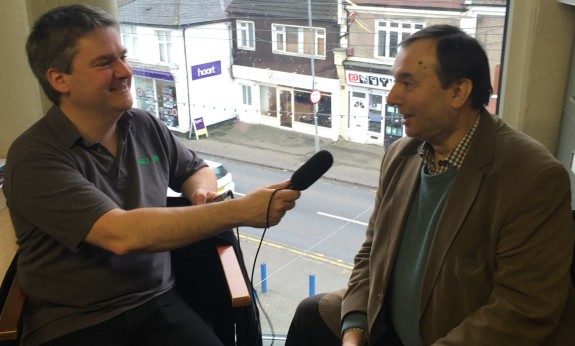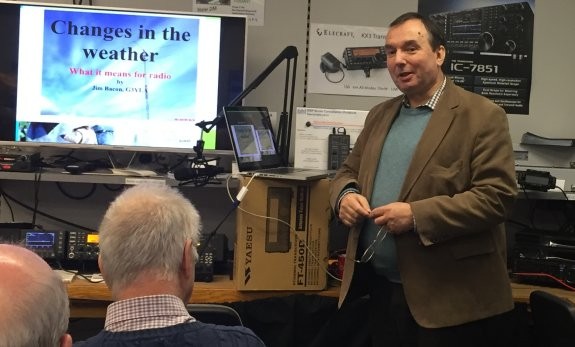At the Waters & Stanton Christmas Open Day in 2015, Essex Ham was very lucky to be able to get an interview with former BBC weatherman Jim Bacon. Jim has been a licensed amateur for many years (callsign G3YLA) and is an expert on both Tropospheric Ducting and Sporadic E.
In this interview, Jim explains how these two weather phenomena work (and help our DX), and provides several useful tips on getting DX on the VHF and UHF bands.

For those new to the topics, some basics extracted from our interview with Jim…
Tropospheric Ducting
“It’s all to do with what happens when big areas of high-pressure form contrasts of moisture and temperature quite low near the ground… Suddenly you find that your 2 metre signals, particularly the higher bands like 70cm, can get trapped in this zone where there’s a rapid change and be ducted with very little loss, not just 50 kilometers up the road, but actually thousands of kilometers”
Sporadic E
“You need to keep your nerve with Sporadic E… Sporadic E is so all-powerful, you practically don’t need to point your beams anywhere – just put a screwdriver in the back…. Minimise wasted time with Sporadic E – May to August is when to concentrate your efforts. Late afternoon, 1600 to 1900 GMT, that will be a good time to switch your rig on and see what’s out there.”
Please take a listen to the fascinating interview, which you can also download as a podcast, or listen to on our streaming Internet radio service.
|
Handy Links
- Getting Started – VHF/UHF Propagation (RSGB Site)
- RSGB Radio Propagation Questions Forum
- Follow Jim G3YLA on Twitter
- Jim Bacon at WeatherQuest

Thanks very much to Jim Bacon G3YLA for his time talking to us about Tropo & Sporadic E. You can follow Jim on Twitter @WQJim, and if you enjoyed this feature, you can see Jim discussing the best ways to improve DX on episode 13 of TX Factor, at www.txfactor.co.uk

